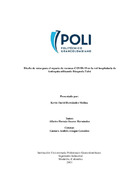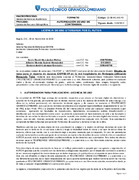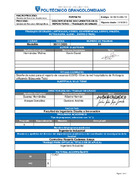Mostrar el registro sencillo del ítem
Diseño de rutas para el reparto de vacunas Covid-19 en la red hospitalaria de Antioquía utilizando Búsqueda Tabú
| dc.contributor.advisor | Araque Gonzalez, Gustavo Andrés | |
| dc.contributor.advisor | Suárez Hernandez, Albeiro Hernan | |
| dc.contributor.author | Hernández Molina, Kevin David | |
| dc.coverage.spatial | Medellín | |
| dc.coverage.temporal | Junio - Noviembre de 2020 | |
| dc.date.accessioned | 2023-01-20T14:02:47Z | |
| dc.date.available | 2023-01-20T14:02:47Z | |
| dc.date.issued | 2020-11-30 | |
| dc.identifier.uri | http://hdl.handle.net/10823/6728 | |
| dc.description.abstract | Gracias a la llegada de las vacunas contra el COVID-19 al país, el gobierno nacional en cabeza del Ministerio de Salud y Protección social enfrenta el duro proceso de distribuir los biológicos a las diferentes bodegas gubernamentales sin alteraciones en su cadena de frio, con el fin de hacerlas llegar a los diferentes centros hospitalarios y mitigar las consecuencias ya desastrosas que ha generado la pandemia del coronavirus. Para lograr este objetivo la presente investigación se centra en el desarrollo de rutas de reparto de vacunas por medio de 2 modelos distintos (Modelo 1 minimización de distancia total de ruta y Modelo 2 minimización de tiempo de recorrido de la ruta), que propone posibles rutas logísticas de reparto de los inmunológicos contra el COVID-19 en una muestra adaptable de 40 hospitales del valle de aburra categorizándolo como un problema de Agente viajero de complejidad de resolución: NP-completo, uno de los problemas más difíciles de la optimización combinatoria, debido al alto número de variables a tratar (1681 variables) y al número de posibles rutas factibles (8,16 * 1047). Este proyecto parte del desarrollo del proyecto de investigación formativa del curso de metaheurísticas, con el que se decide usar una metaheurística llamada búsqueda tabú, y se adiciona un nuevo operador de búsqueda basado en una mutación genética que deriva del uso del gas mostaza en la primera guerra mundial a fin de desarrollar una metodología de adaptación que combina el uso de la heurística el vecino más cercano con el algoritmo clásico de Búsqueda Tabú. | spa |
| dc.description.tableofcontents | 1. RESUMEN DEL PROYECTO: 7 2. TITULO DEL PROYECTO: 7 3. PLANTEAMINETO DEL PROBLEMA: 7 4. OBJETIVO GENERAL 9 5. OBJETIVOS ESPECIFICOS 9 6. JUSTIFICACIÓN: 10 7. MARCO TEÓRICO 11 8. METODOLOGÍA 16 8.1. Descripción cuantitativa del problema 16 8.2. Definición de las variables de decisión modelo 1 (matriz de distancias): 16 8.3. Definición de las variables de decisión modelo 2 (matriz de tiempos): 16 8.4. Definición de la función objetivo modelo 2 17 8.5. Definición de la función objetivo modelo 1 17 8.6. Restricciones del modelo: 17 8.7. Definición de variables relevantes y supuestos 17 8.8. Variables relevantes 18 8.9. Selección y programación del método de resolución (Metaheurística) 19 8.10. Explicación de la metodología empleada en la programación: 23 8.11. Pasos con ejemplo tomados de (S.Hillier & J. Lieberman, 2010): 23 8.12. Pasos de la metodología búsqueda tabú con sub-viaje inverso en macro Excel: 26 8.13. Método de mutación adaptada 35 8.14. Evitar repetidos en la mutación: 40 8.15. Caso con nodo ocupado en la mutación: 42 9. HIPOTESIS 44 10. RESULTADOS: 45 11. ANALISIS DE COSTOS: 46 12. MEDICION DE LA CALIDAD: 46 13. RECOMENDACIONES DEL ALGORITMO DE MUTACION: 47 14. CONCLUSIONES 48 15. DISCUSIÓN Y TRABAJOS FUTUROS 49 16. CUMPLIMIENTO DE LOS OBJETIVOS DEL PROYECTO 50 17. CRONOGRAMA 51 18. BIBLIOGRAFÍA 52 19. ANEXOS: 54 | spa |
| dc.format.mimetype | application/pdf | spa |
| dc.language.iso | spa | spa |
| dc.title | Diseño de rutas para el reparto de vacunas Covid-19 en la red hospitalaria de Antioquía utilizando Búsqueda Tabú | spa |
| dc.type | bachelorThesis | spa |
| dc.type.local | Tesis/Trabajo de grado - Monografía - Pregrado | spa |
| dc.type.driver | info:eu-repo/semantics/bachelorThesis | spa |
| dc.title.translated | Design of routes for the distribution of Covid-19 vaccines in the Antioquia hospital network using Tabú search | spa |
| dc.subject.proposal | Agente viajero | spa |
| dc.subject.proposal | Búsqueda tabú | spa |
| dc.subject.proposal | Logística de distribución | spa |
| dc.subject.proposal | Metaheurística | spa |
| dc.subject.proposal | Mutación | spa |
| dc.subject.lemb | Covid-19 | spa |
| dc.subject.lemb | Servicios de salud | spa |
| dc.subject.lemb | Vacunación | spa |
| dc.description.abstractenglish | Thanks to the arrival of the vaccines against COVID-19 in the country, the national government, headed by the Ministry of Health and Social Protection, faces the tough process of distributing the biologicals to the different government warehouses without alterations in its cold chain, with the in order to get them to the different hospital centers and mitigate the already disastrous consequences that the coronavirus pandemic has generated. To achieve this objective, this research focuses on the development of vaccine delivery routes through 2 different models (Model 1 minimization of total route distance and Model 2 minimization of route travel time), which proposes possible routes. distribution logistics of immunologicals against COVID-19 in an adaptable sample of 40 hospitals in Valle de Aburra, categorizing it as a Problem of Solving Complexity Traveler: NP-complete, one of the most difficult problems in combinatorial optimization, due to the high number of variables to be treated (1681 variables) and the number of possible feasible routes (8.16 * 1047). This project is part of the development of the formative research project of the metaheuristics course, with which it is decided to use a metaheuristic called tabu search, and a new search operator is added based on a genetic mutation that derives from the use of mustard gas in the first world war in order to develop an adaptation methodology that combines the use of the nearest neighbor heuristic with the classical Taboo Search algorithm. | spa |
| dc.subject.keywords | Travel agent | spa |
| dc.subject.keywords | Taboo search | spa |
| dc.subject.keywords | Distribution logistics | spa |
| dc.subject.keywords | Metaheuristics | spa |
| dc.subject.keywords | Mutation | spa |
| dc.relation.references | Anaya Fuentes, G. E., Hernández Gress, E. S., Seck Tuoh Mora, J. C., & Medina Marín, J. (2016). Solución al Problema de Secuenciación de Trabajos mediante el Problema del Agente Viajero. RIAI - Revista Iberoamericana de Automatica e Informatica Industrial, 13(4), 430–437. https://doi.org/10.1016/j.riai.2016.07.003 | spa |
| dc.relation.references | Bellidolo, S. M. (2013). Resolucion del problema minimo de ruteo. Journal of Chemical Information and Modeling, 53(9), 1689–1699. | spa |
| dc.relation.references | Cruz Chávez, M., Moreno Bernal, P., & Peralta Abarca, J. (2014). Aplicación de la teoría de la complejidad en optimización combinatoria. Inventio, la génesis de la cultura universitaria en Morelos, 0(20), 35–42. | spa |
| dc.publisher.program | Ingeniería Industrial | spa |
| dc.type.coar | http://purl.org/coar/resource_type/c_7a1f | spa |
| dc.publisher.faculty | Facultad Ingeniería y Diseño e Innovación | spa |
| dc.identifier.instname | instname:Politécnico Grancolombiano | spa |
| dc.identifier.reponame | reponame:Alejandría Repositorio Comunidad | spa |
| dc.type.hasversion | info:eu-repo/semantics/acceptedVersion | |
| dc.rights.accessrights | info:eu-repo/semantics/openAccess | |
| dc.identifier.repourl | repourl:http://alejandria.poligran.edu.co | spa |
| dc.type.redcol | https://purl.org/redcol/resource_type/TP | |
| dc.rights.creativecommons | Atribución-NoComercial-SinDerivadas 2.5 Colombia | spa |
| dc.type.version | info:eu-repo/semantics/acceptedVersion | spa |
| dc.type.coarversion | http://purl.org/coar/version/c_ab4af688f83e57aa | spa |



